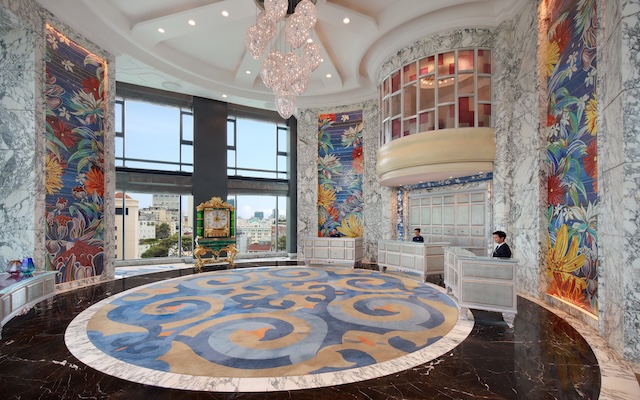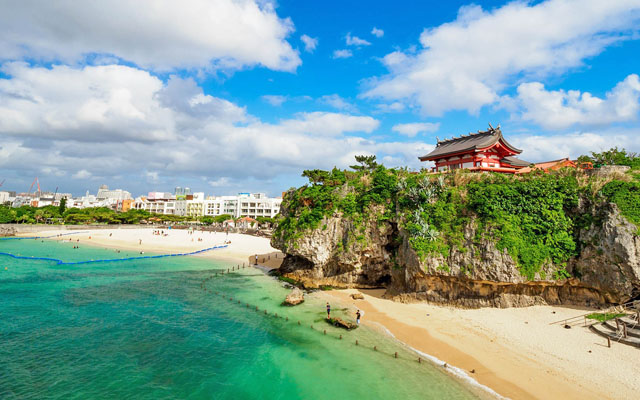Far East Hospitality has just launched a new product for extended stay customers, a segment that is fast evolving and creating new opportunities for the company to compete in the lodging space, shares CEO Arthur Kiong

We are sitting here in your brand-new Quincy House Singapore. It is so stylish and welcoming. How would you describe the character of this serviced residence and what is the profile of guests it targets?
To answer you, I need to take a step back to give you a picture of the changing trend in the extended stay market.
Not too long ago, serviced residences catered to expatriate families arriving primarily from G7 countries. They would come on a very generous package from their employer and stay for a month or two in a serviced residence while waiting for their furniture to arrive and sorting other things out, like securing an international school for their kids.
As such, our serviced residences are more or less all the same – multi-bedroom apartments that are located in the heart of town, close to workplaces and international schools.
That customer profile has changed. Firstly, they are no longer all coming from G7 countries; they are coming from a very diverse range of geographies, like Eastern Europe, China, India, South Korea and Taiwan.
We also see the advent of the solo traveller. Companies have found it increasingly expensive to offer the traditional expatriate package, so many are picking the younger and more upwardly mobile staff who do not have a family relocating with them. These customers are also staying for a shorter duration, no longer for years.
So, demand for larger apartments is becoming less and seasonal.
Another important change is in location preference. While in the past location is very important, customers today prioritise accessibility. Their offices are no longer in the CBD, but in Singapore’s business parks. Customers want to be able to travel easily to the business parks, instead of staying there, and to be able to get around other parts in Singapore.
As a result, we are competing precinct to precinct, no longer block to block where differentiated layout (influences the customers’ decision).
In order to compete by precinct, we have to ensure the attractiveness of the area our serviced residences are in; they must be incredibly well integrated with their surroundings.
There are very few places in Singapore where locals and foreigners can agree on being a great place to be. I think Holland Village is one of the very few such places, so this is where Quincy House Singapore is.
At the same time, we know that the human touch and local experiences are important to extended stay customers. Upon arrival, they have to figure out their neighbourhood and essential services. They could do this themselves over time, or we could help them with information and to identify experiences they would like. Some argue that there is really no need to do this for extended stay customers because they would eventually figure it out themselves. But we think not – we know that people will appreciate their hosts for curating experiences according to their preferences.
So, this leads us to what Quincy House Singapore has to offer. One, it is different; it is not just for families but also for solo travellers, and we have different configurations to choose from. Two, it is not only in a great location, but also a very accessible one. Three, it has a very articulate level of service that would be relevant to the extended stay customer that is evolving.
If you plan on differentiating your product through curated experiences for residents, then you need to rely heavily on people who are curious about their neighbourhood, passionate about wanting to find the coolest things around, and willing to serve. How do you find such people?
Recruitment is horrendously difficult these days, but it helps when the organisation has a foundation and reputation of a culture that is endearing as well as a track record of creating noteworthy and award-winning experiences.
Far East Hospitality has built a reputation of both an endearing culture and a track record of award-winning experiences through our properties like Amoy, The Clan Hotel, The Barracks Hotel, The Outpost, and Village Hotel Sentosa. This makes it easier for us to recruit people with a particular profile.
Now, it obviously took us a long time to build this reputation and what we stand for. I would suppose being able to find these good people is testimony to the successful employer branding that we have worked for many years to establish.
I’ve always believed that organisations at the end of the day always get the employees they deserve.
So, where do we find these people? Is it from our existing staff? Is it from schools? Well, we must have a core team from the organisation going out to schools to engage with people who are graduating and want to do tourism. Another source is Singapore Workforce Skills Qualifications courses, which are taken by people who are in mid-career but wanting to switch to hospitality. The third source is fresh job seekers.
I see that Quincy House Singapore distributes a handy booklet that captures experiences in the Holland Village neighbourhood. How often is the content refreshed so that there is always something new for extended stay customers to discover?
We intend to critically review our Quincy Qurate Neighbourhood Guide every quarter. While we will obtain guest feedback on our curated experiences, we will do so with confidence and not with great sensitivity to polling. What this means is that we will not change something just because a guest said this and that. We know what the market is like, and which experiences are relevant.
You spoke of how Quincy House Singapore was created to serve this new breed of extended stay customers. What is the future for Far East Hospitality’s traditional service residences then?
Let’s talk about chicken rice for a moment. If you have a stall selling tasty chicken rice in a well-located hawker centre, you have a first call advantage and you are always full at lunchtime. But, if you are oblivious, you will not know that actually the market for chicken rice is declining over time, as more and more people are wanting to eat something else. You will probably only get a sense of that when people start to quibble with you over the price of your chicken rice.
What I am saying is, there is always demand for our traditional serviced residences, but we find that certain products are beginning to face price sensitivity. Is this price issue simply seasonal? We have to take a step back to find out.
Every now and again we have to come up with new products in order to get insights on market trends. If we were to only act when the trend becomes so clear because there is empirical data, we would be too late.
Did Far East Hospitality try out curated destination experiences for guests at its traditional serviced residences?
We did that when we launched the Adina brand of apartment hotels and serviced apartments. We refurbished the Regency House for Adina Serviced Apartments Singapore Orchard in 2022 and created something a bit more experiential to see whether the market was prepared to pay.
We built a network of partner merchants around the area to offer residents discounts and perks when they flashed their Adina keycard. We found that, yes, they responded well to such services. One of the most popular perks that our guests have responded positively to are F&B deals, especially those nearby the property.
So, we were emboldened and decided to try something a little more dramatic with the Quincy House Singapore.
Will you bring the Quincy House concept to other destinations, perhaps to Melbourne where your stylish Quincy hotel is doing so well?
It is our aspiration, but at this point in time we don’t have a specific plan. We have to see how Quincy House Singapore works, and then watch for a combination of opportunity and preparedness.
Well, Quincy House Singapore has now been opened for more than a week. How well is it doing?
It opened on October 1 and has beaten our own expectations. It is doing double the volume of what we had when we opened Oasia Residence in 2016.
This achievement is noteworthy because in terms of size, Quincy House Singapore has 255 rooms while Oasia Residence has 140.
The vast majority of customers here are booked for between a week to a several months, although we have a couple of bookings that stretch across years. We are really grateful and wish for more customers like that.

















